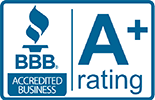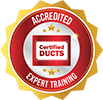- August 14, 2025
- in Uncategorized
- by Kyle Stewart
The back-to-school season brings new schedules, fresh routines, and busy mornings. While parents focus on school supplies, bookbags, and packed lunches, one important detail often gets overlooked, the air your family breathes at home.
Indoor air quality plays a huge role in your family’s health, focus, and overall wellness. Poor air quality can trigger allergies, cause fatigue, and even impact concentration. As kids spend more time indoors doing homework, completing projects, or resting indoors after sports and activities, ensuring clean air is just as essential as keeping their school clothes washed and lunches fresh.
August is the perfect month to prepare your home for the school year. The weather is still warm, but fall allergens are on their way. Taking action now helps reduce the risk of seasonal allergies, colds, and other respiratory issues when school starts.
Here’s your complete Back-to-School Indoor Air Checklist to make sure your home is ready.
1. Replace Air Filters
Your HVAC system works hard during summer. Over time, dust, pollen, and pet dander build up in the filters. A dirty filter restricts airflow, reduces efficiency, and spreads contaminants through your home.
Back to school is the perfect reminder to replace the filter on your HVAC system and is the first line of defense to improve indoor air quality. For homes with pets or allergy-sensitive family members, consider upgrading to a high-efficiency filter with a higher MERV rating. This traps smaller particles that standard filters miss.
Pro Tip: Mark your calendar to replace filters every 1 – 3 months, depending on usage and household needs.
2. Schedule an Air Duct Cleaning
Your heating, ventilation, and air conditioning (HVAC) system is the unsung hero of home comfort. During the sweltering months of summer, it works tirelessly to keep your indoor spaces cool and pleasant, circulating air continuously. As it does, it draws in air from your home, along with dust, allergens, and other contaminants. These contaminants start to collect in your home’s duct system and get pushed back into the home.
August is the perfect time to schedule a professional air duct cleaning because it removes summer buildup before cooler weather pushes your family indoors for more extended periods.
A professional cleaning can:
- Help your HVAC system work more efficiently
- Reduce dust and other allergy triggers
- Help your HVAC system last longer
If you’re in Florida, Breathe Cleaner Aire FL offers expert duct cleaning services that ensure your family breathes cleaner, fresher air.
3. Control Humidity Levels
Humidity plays a significant role in indoor air quality. Too much moisture encourages mold growth and dust mites. Too little humidity can cause dry skin, irritated sinuses, and even nosebleeds.
For most homes, the ideal indoor humidity level is between 30% and 50%. Use a hygrometer to check your levels. If your home is too humid, a dehumidifier can help. If it’s too dry, consider a humidifier.
Balancing humidity will help prevent mold growth and keep allergies in check.
4. Deep Clean Carpets, Rugs, and Upholstery
Carpets and upholstery act like giant air filters, trapping dust, pollen, and allergens. Over time, these particles get kicked back into the air every time someone walks or sits on them.
A professional cleaning removes these hidden contaminants. For families with allergy-prone children, this step is crucial. If you can’t hire a service, use a vacuum with a HEPA filter and steam clean high-traffic areas.
Tip: Try to choose a cool day so you can open windows and allow everything to dry faster.
5. Ventilate Your Home Daily
Fresh air is one of the best ways to improve indoor air quality. Even if you have a great HVAC system, it’s important to let outdoor air circulate through your home.
Try opening windows for 10–15 minutes in the morning or evening when outdoor air quality is best and the air is slightly cooler and less humid. Use a kitchen exhaust fan when you cook and bathroom exhaust fans every time you shower to remove excess moisture and odors.
You can check the AirNow.gov website for daily air quality updates before airing out your home.
6. Clean Ceiling Fans and Light Fixtures
Ceiling fans collect dust quickly, and when turned on, that dust spreads around the room. Light fixtures can also trap dust and insects.
Before school starts, wipe down all ceiling fan blades, light covers, and lamp shades. This small step helps prevent dust from being blown around the room.
7. Wash Bedding and Curtains
Bedding and curtains trap dust mites, pollen, and pet dander. Wash sheets, pillowcases, and blankets weekly in hot water to kill dust mites. For curtains, check the care label; many can be machine washed, while others need dry cleaning.
If you have children with allergies, consider using allergen-proof mattress and pillow covers.
8. Check for Mold and Mildew
Mold isn’t just an eyesore; it can cause serious health problems, especially for children with asthma or allergies.
Inspect bathrooms, basements, laundry rooms, and any other areas where moisture collects. Look for spots on walls, ceilings, or around windows. It can also be found in and around your air ducts. If you find mold, clean small patches with a mixture of vinegar and water. For larger areas, call a professional.
Prevent mold by fixing leaks quickly and keeping humidity under control.
9. Use an Air Purifier in Key Rooms
Air purifiers can help reduce allergens, dust, and even viruses. Place them in bedrooms, living rooms, and other high-use areas.
Choose a purifier with a HEPA filter for the best results. Some models also include activated carbon filters to remove odors from cooking or pets.
If you already own one, don’t forget to change the filter according to the manufacturer’s schedule.
10. Avoid Strong Chemical Cleaners
While it’s tempting to deep clean with powerful chemicals before school starts, many cleaners release VOCs (volatile organic compounds) that lower indoor air quality.
Opt for natural cleaning products or make your own using vinegar, baking soda, and a little dish soap. If you must use stronger products, open windows and use fans for ventilation.
11. Maintain Your HVAC System
An HVAC tune-up in August ensures your system is running efficiently before cooler weather arrives. A professional will check for leaks, clean components, and ensure everything is working correctly.
This not only improves air quality but also saves money on energy bills, it can also extend the life of your HVAC unit.
12. Create a No-Shoe Policy
Shoes bring in dirt, pesticides, and other contaminants from outside. By asking family members and guests to remove their shoes at the door, you prevent these pollutants from spreading through the home.
Place a shoe rack or mat near the entrance to make it easier to remove your shoes.
Final Thoughts: Breathe Easier This School Year
The back-to-school season is a fresh start for the whole family. By taking steps to improve your home’s indoor air quality now, you can help reduce allergies, improve focus, and keep everyone healthier through the busy months ahead.
Whether it’s replacing air filters, scheduling a duct cleaning, or simply opening the windows, small changes can make a big difference.
If you’re ready to make your home’s air cleaner and healthier before fall, contact Breathe Cleaner Aire FL today. Their team can help you remove hidden contaminants and create a fresher, safer environment for your family.






